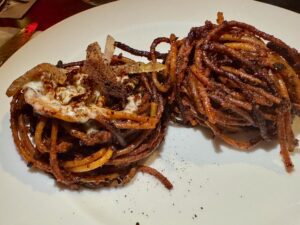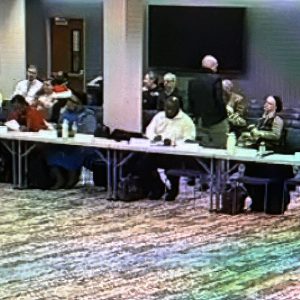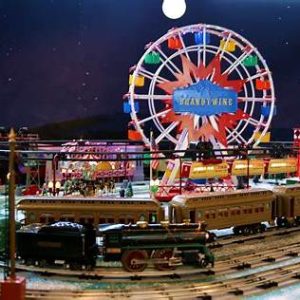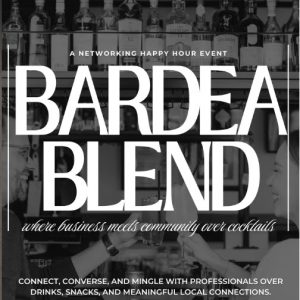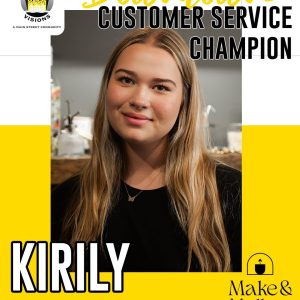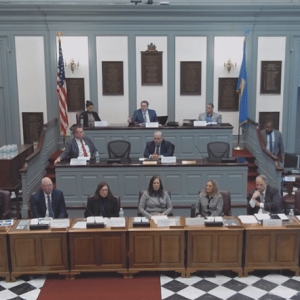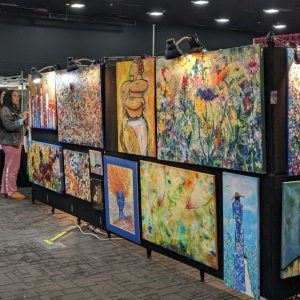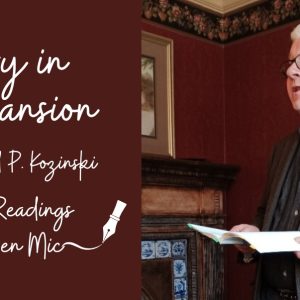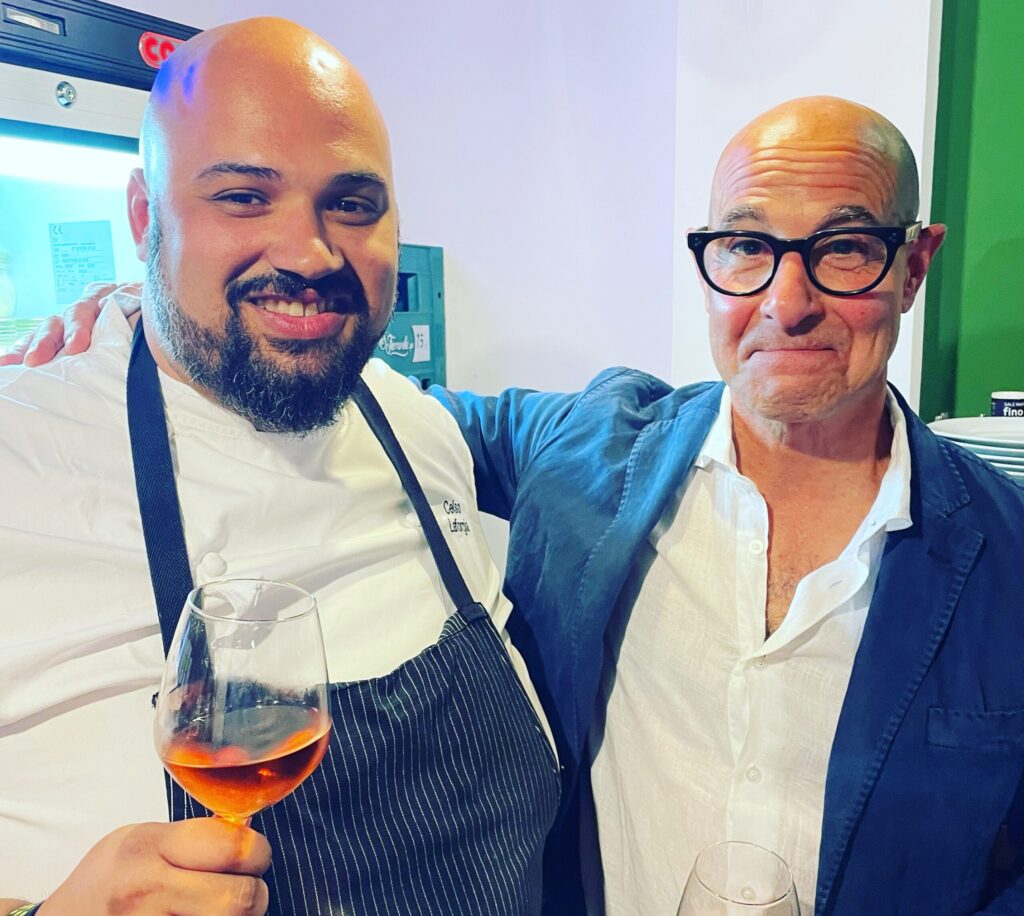
Thanks to Chef Celso Laforgia and V&M Bistro, 70 Delawareans are now one red-hot degree of separation from actor Stanley Tucci, who did not join everyone for dinner Saturday night
BRANDYWINE HUNDRED — Chef Celso Laforgia of Stanley Tucci’s “Searching for Italy” cooked his killer pasta for special guests at an event at V&M Bistro on Dec. 7, meaning about 70 people are now one degree of spicy separation from Academy Award-nominated actor Stanley Tucci.
Diners at the Brandywine Hundred restaurant paid $180 per person to meet Chef Celso, who appeared on “Stanley Tucci: Searching for Italy,”
“Scorched, crispy, spicy—these are the three basic characteristics of “spaghetti all’ Assassina,” the chef said. It is the trademark dish in Bari, the capital of southern Italy’s Puglia region.
Tucci visited Laforgia’s restaurant, Urban L’Assassiniera Urbana in Bari, and after the CNN episode aired, orders soared to 700 to 1,000 orders a week, Laforgia told The New York Times. About 10% of his customers are American.
On Dec. 7, V&M patrons learned that “killer pasta” more than lived up to its name.
The birth of a regional dish
Laforgia did not invent spaghetti all’Assassina; it’s been a popular regional dish since at least the 1960s. When the owners of Al Sorso Preferito in Bari acquired a neighboring rotisserie, they discovered the recipe on the old menu and repurposed it.
In Bari, academies opened to perfect the technique, and disciples meet monthly to share ideas. Most agree that an oiled cast-iron skillet is critical to the dish’s success. Traditionally, it’s cleaned with newspaper, so it retains some grease. However, modern food safety practices permit a nonstick pan.
Laforgia studied the culinary arts in Milan and worked in restaurants in London, Berlin, Turin, and Rome. Back in Bari, he and partner Michele Salvati started the Urban restaurant, which features
Urban offers a variety of Assassine, including one with broccoli rabe and another with bacon, anchovies and tomato confit.
So, what brought the Italian chef and his famous dish to North Wilmington? Laforgia’s father, Dr. Renato Laforgia, is a friend of the Carrieri-Russos, who own V&M and have family in Mola di Bari.
“It was only fitting to celebrate our heritage and culture by offering an authentic Pugliese dining experience at V&M Bistro,” says Vincenza Carrier-Russo, the V behind the brand. Her sister, Margherita, is the M.
A sensory experience
On that Saturday, the genial Laforgia made his way around the restaurant dining room while guests enjoyed the meat, cheese and focaccia selection arranged on the bar.
Then, attendees took their seats for neat squares of eggplant parmesan and the cooking demonstration.
Laforgia had two skillets going while chatting with Vincenza, who is comfortable before a crowd. Along with owning a restaurant, she co-hosts “Good Morning Wilmington” on DETV.
“It’s simple ingredients—tomato sauce, chili flakes, olive oil and spaghetti,” he told the diners while adding olive oil from Puglia to the pans.
When the red pepper hit the hot oil, you could smell the spice level. More than a few diners began discreetly coughing. Even Laforgia had to clear his throat. He urged the group to sip their wine.
The spaghetti is toasted in the skillet, not in boiling water, to become crunchy and slightly charred, and the spaghetti sauce is baked into the pasta.
Timing the dish takes practice. It’s charred but not burnt. Laforgia said the process is similar to a risotto recipe. “You have to give it love and passion,” he said of the food.
Not your everyday pasta
The tight coils of pasta were undeniably hot—as in spicy. But it is not every day that you see a chef prepare a unique dish that most people travel to Puglia to try.
V&M offset the heat with one of its famous boozy cocktails and a decadent brownie with ice cream.
In America, Laforgia is the face of spaghetti all’ Assassina, thanks to Tucci. However, the chef said he didn’t realize that the person coming to his restaurant was the actor until he appeared.
“I forgot my English completely,” Laforgia recalled. “But he talked to me about his family, his kids and what they love to make. He asked me about my kids. Once he saw I was comfortable, he said to the producer, ‘OK, let’s go and film.’”
The segment is short but memorable. “A lot of Americans come to Italy just to have dinner in our restaurant,” he said.
He motioned to his dish. “And I just cooked my own spaghetti all’ Assassina just for you.”
RELATED STORIES:

Share this Post




